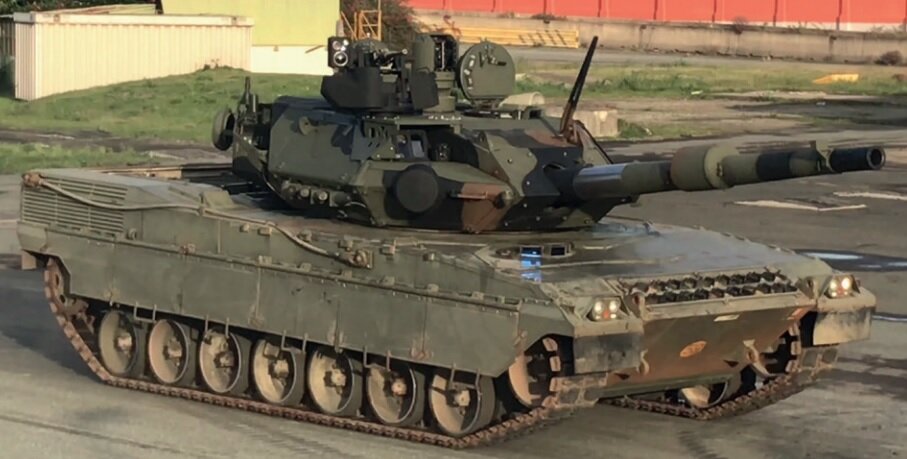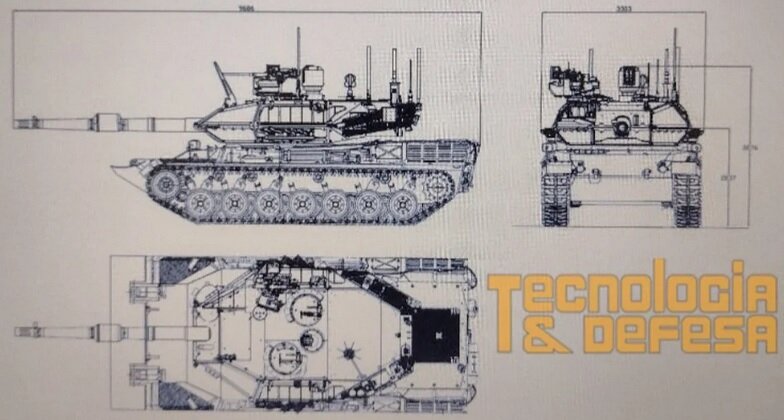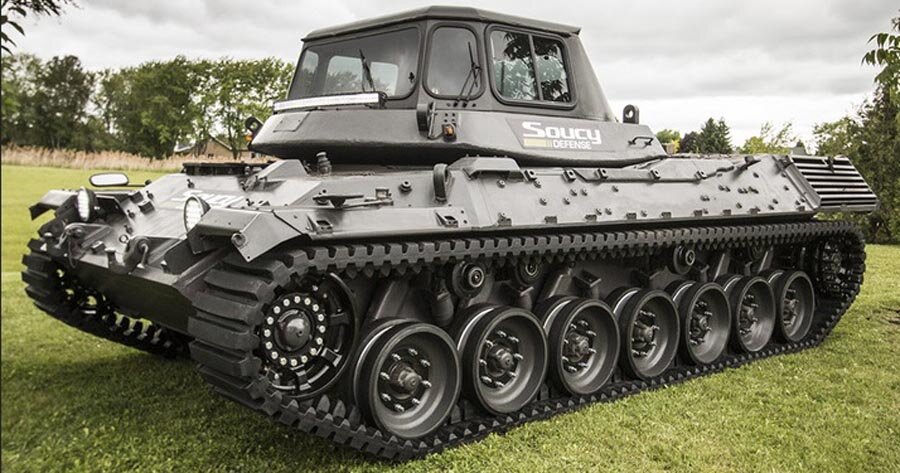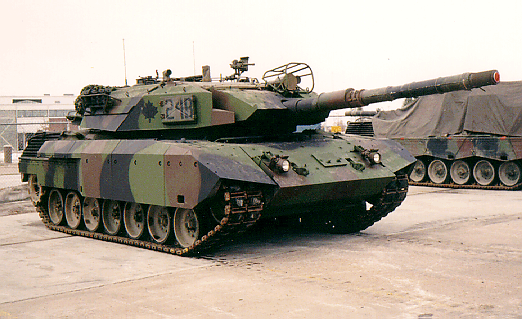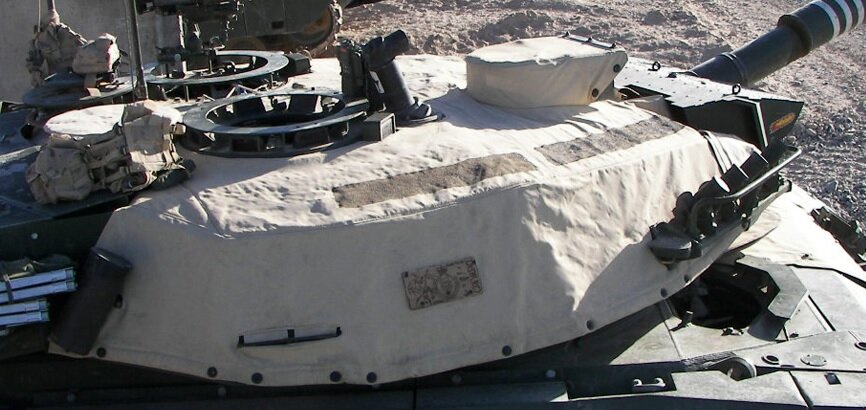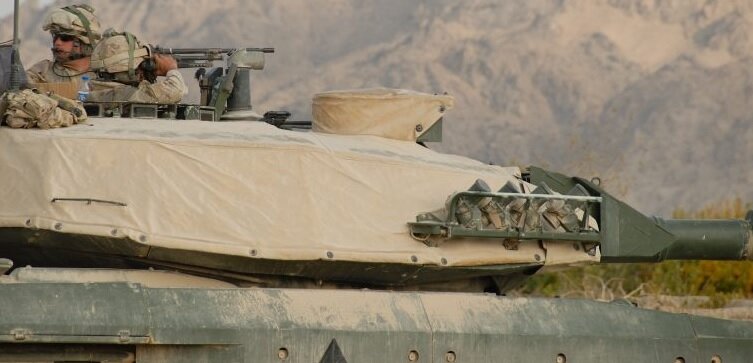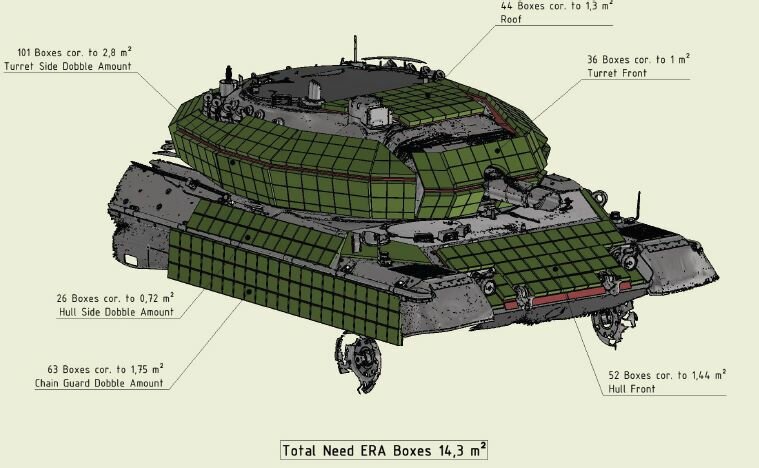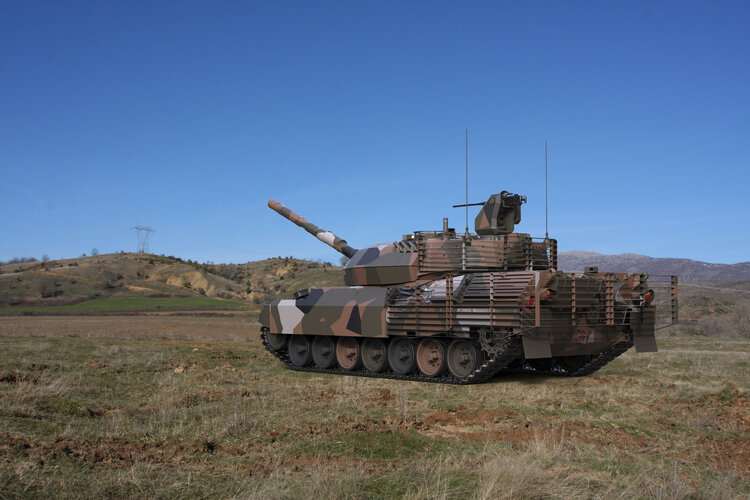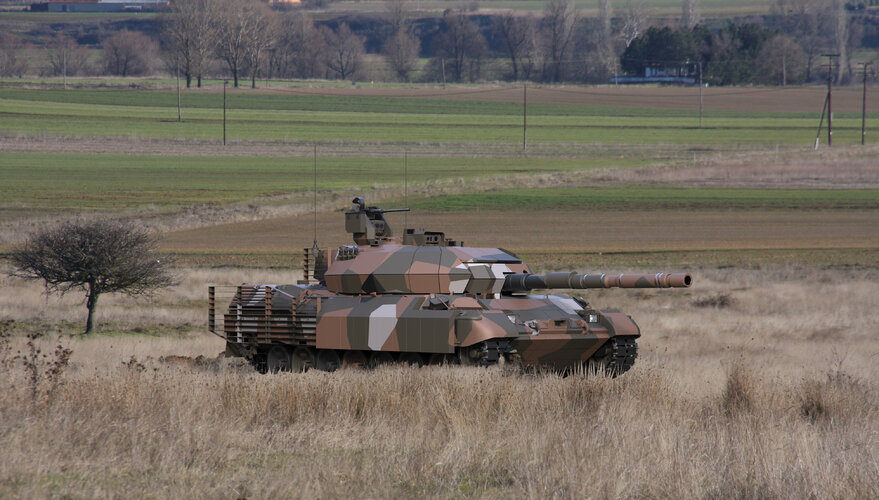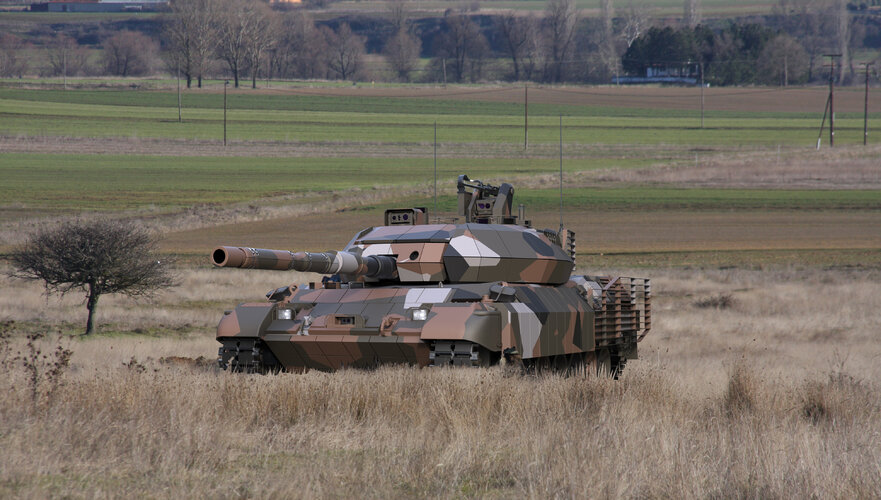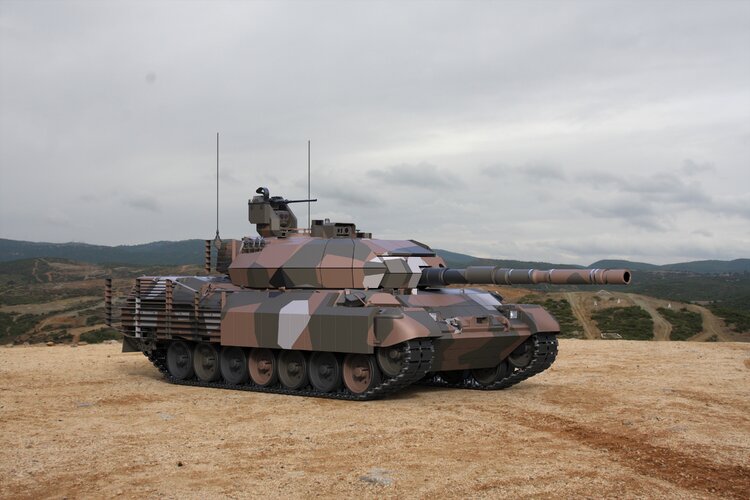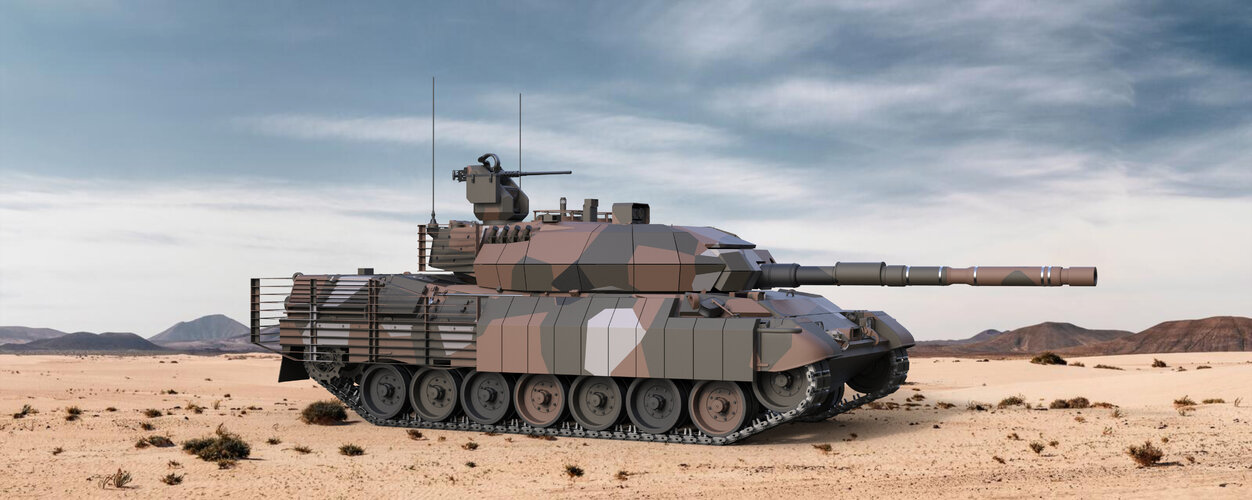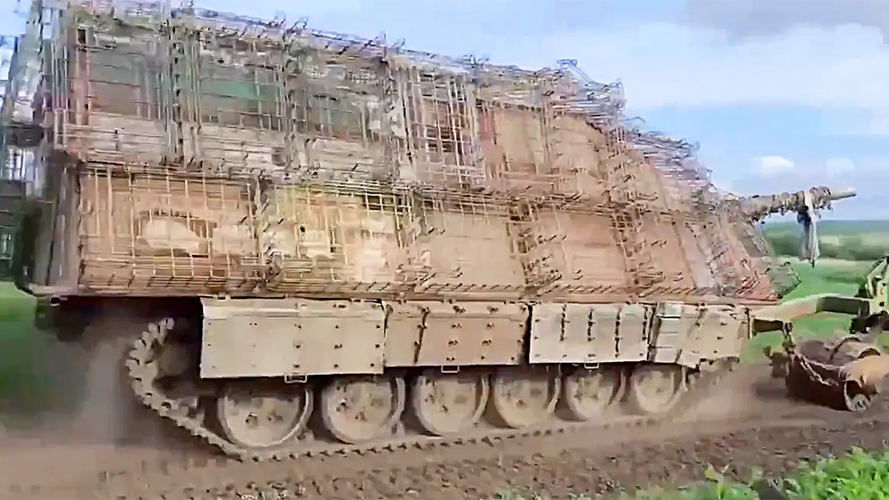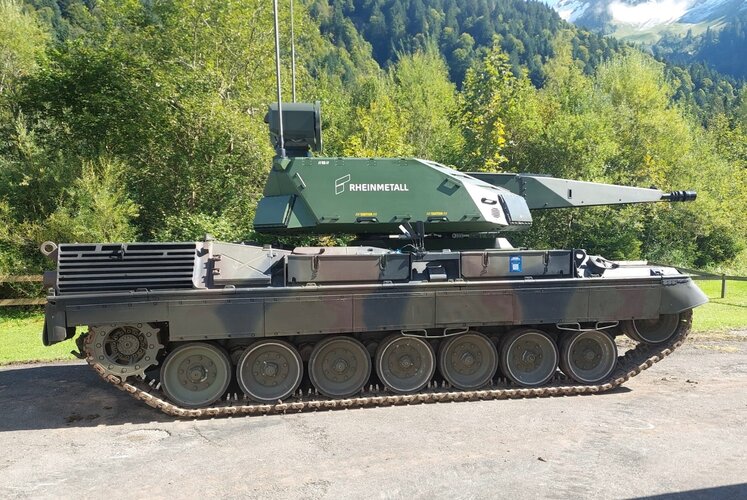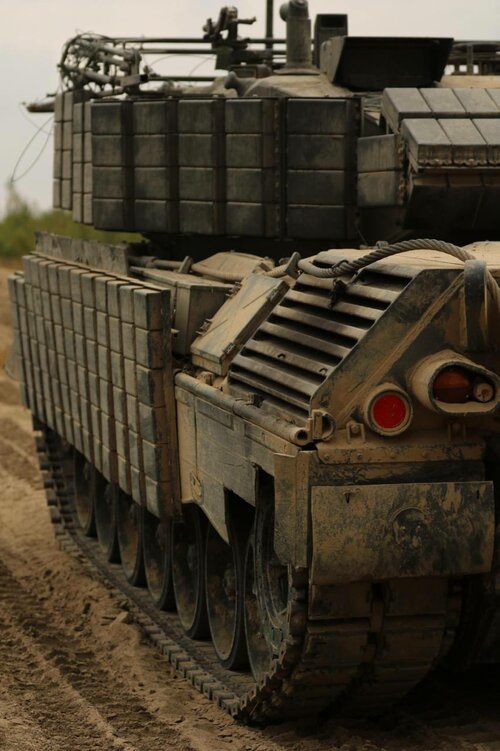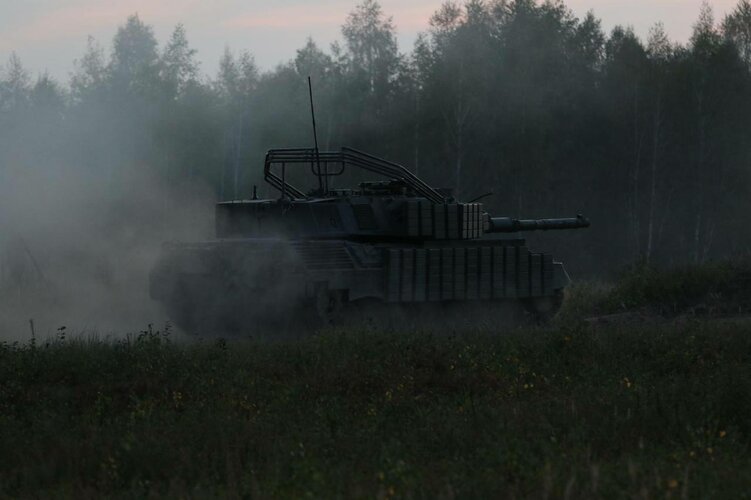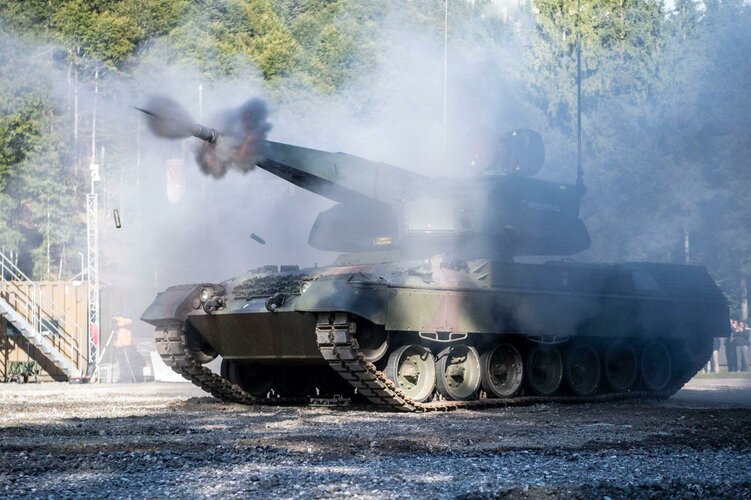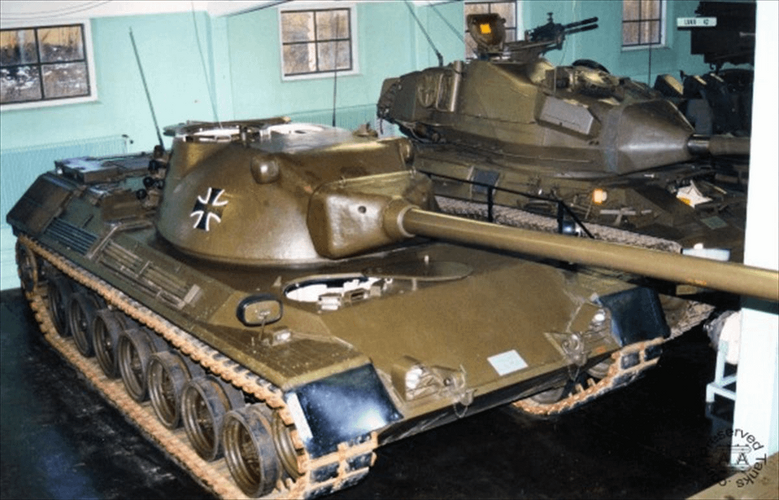You are using an out of date browser. It may not display this or other websites correctly.
You should upgrade or use an alternative browser.
You should upgrade or use an alternative browser.
Leopard 1 variants
- Thread starter arc3371
- Start date
Gerard31956
ACCESS: Restricted
Greece Considers Upgrade of Leopard 1A5 Tanks with Italian Leonardo's Turret | Defense News December 2023 Global Security army industry | Defense Security global news industry army year 2023 | Archive News year
Greece Considers Upgrade of Leopard 1A5 Tanks with Italian Leonardo's Turret
- Joined
- 25 July 2007
- Messages
- 4,297
- Reaction score
- 4,183
AFAIK, the first MBT application for HITFACT II (by then-OTO Melara) was a C1 Ariete demonstrator - aimed at the Ariete AMV (Aggiornamento Mezza Vita or MLU). The planned C2 Ariete didn't lead anywhere and the final Ariete AMV was retain the C1's original steel turret.
The first actual Leopard 1 proposal was Leonardo's pitch for the Exército Brasileiro's VBC CC Corrente programme - an upgrade for the Leopard 1A5 BR (as was the Cockerill 3105). That proposal to Brazil didn't go anywhere either (which, for those interested in potential Leo 1A5 upgrades for Ukraine, is probably a good thing).
The HITFACT II turret is of aluminum construction which lowers a Leo 1A5's loaded weight by more than 4 tonnes (the original steel turret weighing around 9-t, HITFACT II about 5.45-t).Yet, somehow, the Leonardo turret has the same ballistic protection rating (Level 4/STANAG-4569) as the Leo 1A5 original. Edit: See reply #87
A minor puzzle for me is HITFACT II being a 3-man turret. Since the thing has a 12-round autoloader, what is the exact role of that fourth crew member?
The first actual Leopard 1 proposal was Leonardo's pitch for the Exército Brasileiro's VBC CC Corrente programme - an upgrade for the Leopard 1A5 BR (as was the Cockerill 3105). That proposal to Brazil didn't go anywhere either (which, for those interested in potential Leo 1A5 upgrades for Ukraine, is probably a good thing).
The HITFACT II turret is of aluminum construction which lowers a Leo 1A5's loaded weight by more than 4 tonnes (the original steel turret weighing around 9-t, HITFACT II about 5.45-t).
A minor puzzle for me is HITFACT II being a 3-man turret. Since the thing has a 12-round autoloader, what is the exact role of that fourth crew member?
Attachments
Last edited:
Perdikofas
ACCESS: Restricted
- Joined
- 16 November 2019
- Messages
- 39
- Reaction score
- 201
As I understand it the 3-man crew is due it not having a true autoloader, but rather a loader's assist. Leonardo does market the turret as being 2 or 3 man crewed on their brochure but I've yet to see the former. Brazil tested both manual and assisted loading versions recently from what I recall and they found the latter to have no real advantages over manual loading.AFAIK, the first MBT application for HITFACT II (by then-OTO Melara) was a C1 Ariete demonstrator - aimed at the Ariete AMV (Aggiornamento Mezza Vita or MLU). The planned C2 Ariete didn't lead anywhere and the final Ariete AMV was retain the C1's original steel turret.
The first actual Leopard 1 proposal was Leonardo's pitch for the Exército Brasileiro's VBC CC Corrente programme - an upgrade for the Leopard 1A5 BR (as was the Cockerill 3105). That proposal to Brazil didn't go anywhere either (which, for those interested in potential Leo 1A5 upgrades for Ukraine, is probably a good thing).
The HITFACT II turret is of aluminum construction which lowers a Leo 1A5's loaded weight by more than 4 tonnes (the original steel turret weighing around 9-t, HITFACT II about 5.45-t). Yet, somehow, the Leonardo turret has the same ballistic protection rating (Level 4/STANAG-4569) as the Leo 1A5 original.
A minor puzzle for me is HITFACT II being a 3-man turret. Since the thing has a 12-round autoloader, what is the exact role of that fourth crew member?
The HITFACT II turret is of aluminum construction which lowers a Leo 1A5's loaded weight by more than 4 tonnes (the original steel turret weighing around 9-t, HITFACT II about 5.45-t). Yet, somehow, the Leonardo turret has the same ballistic protection rating (Level 4/STANAG-4569) as the Leo 1A5 original.
The Leopard 1A5 is armor protection has not been qualified according to NATO STANAG 4569 (which is a much newer standard than the tank and only meant for light and medium vehicles); its protection significantly exceeds the Level 4 of STANAG 4569.
Phantom Fanatic
the ATF program was truly great
- Joined
- 27 October 2022
- Messages
- 79
- Reaction score
- 101
That's actually a Leopard C1 with MEXAS, a small batch of C1s were up-armored with MEXAS for KFOR.There is also the Canadian Leopard C2 MEXAS
- Joined
- 25 July 2007
- Messages
- 4,297
- Reaction score
- 4,183
That's actually a Leopard C1 with MEXAS, a small batch of C1s were up-armored with MEXAS for KFOR.
The Leopard C1 with MEXAS shown apparently belonged to B Squadron, 4th Troop, Royal Canadian Dragoons. When photographed, the MEXAS panels - tan as supplied by IBD - had just been oversprayed with 3-coloured NATO camouflage to match the original vehicle paint.
During the KFOR deployment, the 'designation' Leopard C1A1 got batted around. AFAIK, there is no evidence for such nomenclature ... but that didn't stop the Leopard C2 with MEXAS from being dubbed a 'C2A1'.
Going back to paintwork, IIRC, by the time of the Leo C2s with MEXAS, the CF standard scheme for armour had become all-over CARC (Chemical Agent Resistant Coating) green. Which raises a question: Were any C2s repainted in all-over tan (as seen on so many scale model depictions of the type)?
Leopard C2 with MEXAS in Afghanistan were often smeared with tannish mud and, eventually, fitted with tan-coloured heat shield blankets (over turrets and drivers' area). But I don't recall any C2s repainted in all-over tan.
Attachments

KMW and EODH unveil Leopard 1A5 modernization solution to Greek General Staff | Defense News February 2024 Global Security army industry | Defense Security global news industry army year 2024 | Archive News year
KMW and EODH unveil Leopard 1A5 modernization soluton to Greek General Staff
Perdikofas
ACCESS: Restricted
- Joined
- 16 November 2019
- Messages
- 39
- Reaction score
- 201
Colonial-Marine
UAVs are now friend, drones are the real enemy.
- Joined
- 5 October 2009
- Messages
- 1,468
- Reaction score
- 1,320
Hopefully it does not last very long.The age of the cope cage is upon us.
- Joined
- 21 May 2006
- Messages
- 2,988
- Reaction score
- 2,239
Yes, for a ridiculed Russian battlefield improvisation, learnt in actual battle, the cope cage seems to not just have merit, but the notion has kicked on in both the Ukrainian and the West.The age of the cope cage is upon us.
Regards
Pioneer
Last edited:
Perdikofas
ACCESS: Restricted
- Joined
- 16 November 2019
- Messages
- 39
- Reaction score
- 201
More info as well as renders of EODH's Leopard 1A5 upgrade project popped up, company-designated as Leopard 1HEL. It seems to be a cooperative project between EODH, KNDS, and DUMA.
Upgrades according to them are as follows (sorry for the long post):
Upgrades according to them are as follows (sorry for the long post):
- New 1,000 horsepower powerpack.
- Operation in environments with ambient temperatures of -25°C / +45°C.
- Engine air filtration with automatic cleaning.
New powertrain, strengthened and upgraded to take advantage of the higher torque and heavier combat weight of the LEO 1HEL.- New final drives, strengthened and adapted to mate with the new gearbox.
- A new one-piece rubber track is available as an option for better suspension performance and weight savings.
- New suspension with hydropneumatic wishbones that offer better performance and free up the interior space occupied by the existing torsion bars.
- Automatic track tensioner controlled from driving position.
- New battery and power management system.
- The upgrade package covers the Fire Control System (FCS) and the GCS (Gun Control System).
- It is specially designed for upgrading older types of tanks.
- The FCS is based on a fully stabilized main sight for the gunner parallel to the tank gun.
- Fully stabilized independent panoramic periscope for the commander, which uses the same type of optical sensors as the gunner and with integrated 12.7 mm M2 RWS (Remote Weapon Station).
- Gunner and commander sights incorporate long-range thermal imaging camera, day camera with continuous zoom lens, digital laser rangefinder and laser pointer (for alignment with the gun barrel).
- Dynamic Muzzle Reference System, Automatic Target Tracking, Web Weather Data and Positioning System (GPS/compass) available.
- It has an Automatic Target Tracking Unit, for the advanced processing of the digital video image coming from the gunner's or commander's day camera or thermal sight.
- Fire Control Circuits allow the commander to activate or deactivate each weapon system and provide him with the ability to override the gunner.
- The commander can continuously detect new targets and automatically pass them to the gunner (Hunter-Killer).
- While the gunner engages a target the commander can engage a threat with the 12.7mm M2 heavy machine gun built into the Independent Panoramic Periscope (Killer – Killer).
- The new crew positions provide improved ergonomics, comfort and survivability.
- Human-machine interfaces use multi-function LCD touch screens and wired control panels that allow easy role switching and data sharing.
- A peripheral observation system with 8x zoom cameras is available, providing the crew with full tactical situational awareness.
- The Remote Weapon Station (RWS) is fully interfaced with the commander's independent panoramic periscope for anti-aircraft and anti-drone use.
- Capable of incorporating A/T guided missiles and/or side-launched missiles (ATGMs).
- LM (Loitering Ammunition) integration available.
- The ability to integrate an organic Drone for detection/targeting is available.
- The LEO1 HEL is a fully digitized, network-centric combat platform with widespread use/fusion of sensors and weapons, assisted by artificial intelligence that acts as a force multiplier in the modern battlefield.
- It features multi-layer connectivity with command echelons and concurrent robotic systems such as UAVs, UGVs and LMs, using secure, high-speed data links.
- It achieves the sharing and exchange of real-time tactical situational imaging data to conduct combined operations from the individual soldier to the Tactical Battle Group and Brigade level.
- Next generation Battlefield Management System (BMS) with operator support through Artificial Intelligence (AI) to reduce workload and quick decision making.
- Complete package of Passive/Active protection to deal with all modern threats. The weight of the modernized tank is now 46 tons.
- A full suite of active protection sensors and countermeasures is offered.
- The Remote Weapon Station (RWS) is offered with an integrated EW (Early Warning) Anti-Drone system.
- Digital intercom system with noise canceling headset for use with up to 3 Combat Network (CNR) transceivers.
- External communications system with software-driven V/UHF transceiver for voice and C2 communications with ground and airborne platforms and SATCOM transceiver.
- Secure high-speed radio data capture for controlling drones and robotic vehicles.
- Communication server to serve C5I needs with automatic selection of the optimal communication channel.
Attachments

Greece unveils new Leopard 1HEL Main Battle Tank with European collaboration | Defense News April 2024 Global Security army industry | Defense Security global news industry army year 2024 | Archive News year
Greece unveils new Leopard 1HEL Main Battle Tank with European collaboration
kqcke for you
PUMA PUMA PUMA
- Joined
- 3 November 2022
- Messages
- 1,270
- Reaction score
- 1,669
Probaly the PowerPack mentioned for the Leopard 1HelMore info as well as renders of EODH's Leopard 1A5 upgrade project popped up, company-designated as Leopard 1HEL. It seems to be a cooperative project between EODH, KNDS, and DUMA.
Upgrades according to them are as follows (sorry for the long post):
https://defence-network.com/remotorisierung-von-wisent-1-und-leopard-1/
prof12
ACCESS: Confidential
- Joined
- 4 December 2019
- Messages
- 50
- Reaction score
- 106
1987 - Sixteen prototypes logged over 60,000 miles of logging. Development costs reached US$90 million. The GT-601 gas turbine has been extensively tested in the US, UK, France, Israel and Germany. ITI hoped to receive orders for the conversion of M-47, M-48, M-109, AMX-30 and German main battle tanks, as well as orders related to power generation, industrial and marine energy.
the time period coincides with the M 47, M 48 and Leopard -1 tanks, perhaps it was on this tank that the gas turbine was installed, and then it was installed on the Leopard -2 only from the Abrams
the time period coincides with the M 47, M 48 and Leopard -1 tanks, perhaps it was on this tank that the gas turbine was installed, and then it was installed on the Leopard -2 only from the Abrams
kqcke for you
PUMA PUMA PUMA
- Joined
- 3 November 2022
- Messages
- 1,270
- Reaction score
- 1,669
Leopard 1A5DKV 

Ukrainian Ground Forces Test German Leopard 1A5 Main Battle Tanks
Ukrainian Ground Forces Test German Leopard 1A5 Main Battle Tanks
Colonial-Marine
UAVs are now friend, drones are the real enemy.
- Joined
- 5 October 2009
- Messages
- 1,468
- Reaction score
- 1,320
Seems like a good use of the Leopard 1 hull, especially considering how much more valuable such short-range AA has become. I wonder why the turret is somewhat elevated that platform versus the Leopard 2 prototype shown earlier where it is pretty much flush with the hull.
Last edited:
Scott Kenny
ACCESS: USAP
- Joined
- 15 May 2023
- Messages
- 11,379
- Reaction score
- 13,846
Turret ring adapter?Seems like a good use of the Leopard 1 hull, especially considering how much more valuable such short-range AA has become. I wonder why the turret is somewhat elevated that platform versus the Leopard 2 prototype shown earlier where it is pretty much flush with the hull.
Is the Leo2 turret ring different size than the Leo1?
- Joined
- 25 July 2007
- Messages
- 4,297
- Reaction score
- 4,183
Turret ring adapter?
Is the Leo2 turret ring different size than the Leo1?
Turret rings are the same size for both types - 1.98 m inside diameter, 2,200 m outside.
That elevating ring is needed because the Leopard 1 rear deck slopes upwards sooner than that of the Leo 2.
- Joined
- 1 May 2007
- Messages
- 2,593
- Reaction score
- 1,958
What is the tank on the right of the image ?
cheers,
Robin.
Cthell
I really should change my personal text
- Joined
- 13 December 2013
- Messages
- 22
- Reaction score
- 56
What is the tank on the right of the image ?
cheers,
Robin.
Looks like a Swedish Strv 74
- Joined
- 1 May 2007
- Messages
- 2,593
- Reaction score
- 1,958
Looks like a Swedish Strv 74
Ah, that explains why the turret looks too large . . .
cheers,
Robin.

Rolls-Royce and FFG are working on a concept for the repowering of Wisent 1 and the Leopard 1 tank vehicle family wit <em>mtu</em> 8V199.
Rolls-Royce and FFG are working on a concept for the repowering of Wisent 1 and the Leopard 1 tank vehicle family wit <em>mtu</em> 8V199.
A variant of Leopard 1A5 with the Kontakt-1 ERA. Unfortunately, the ERA did not provide adequate protection.


![esepa-2007-10051914881724[1].jpg esepa-2007-10051914881724[1].jpg](https://www.secretprojects.co.uk/data/attachments/242/242610-433e44f1f59683b09b0570f76afbe39d.jpg)
